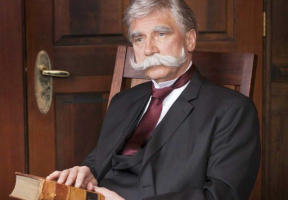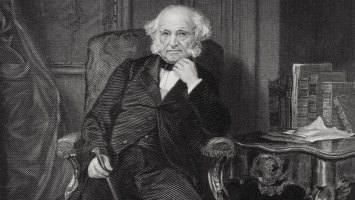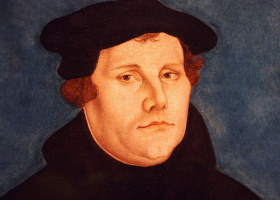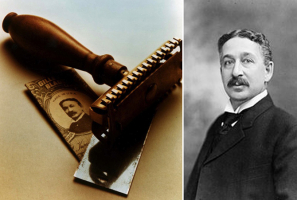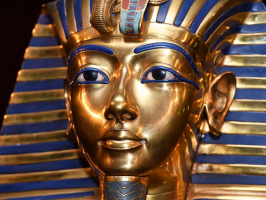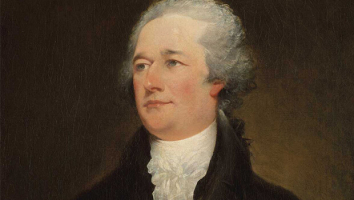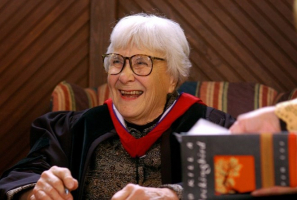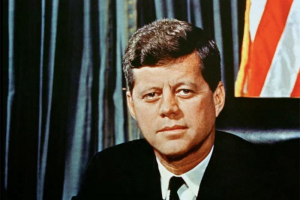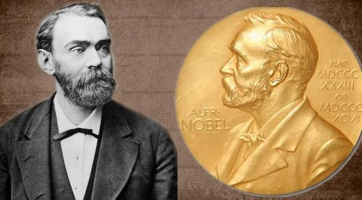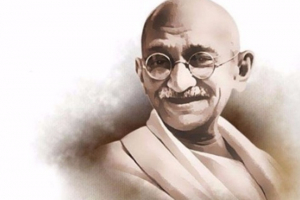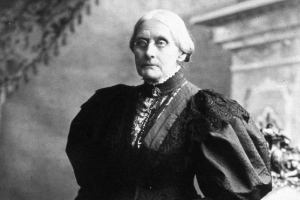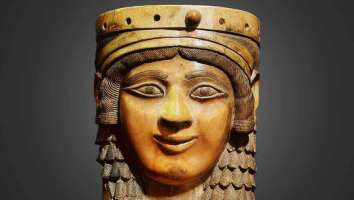Top 6 Interesting Facts about Martin Luther King Jr.
One of the most revered individuals from the 20th century is the Rev. Dr. Martin Luther King Jr. Since his murder in 1968, his image and words have become ... read more...well-known all across the world. He continues to be an international icon without a doubt. Even though we have learned a great deal about his life via books and movies that attempt to capture the spirit of who he was, there may be some facts about him that many people may not be aware of. We highlight a few interesting facts about Martin Luther King Jr. below.
-
Let's not forget that in 1944, when Dr. Martin Luther King, Jr. was 15 years old and a junior in high school, he passed the admission exam and enrolled in Morehouse College. He was accepted into Morehouse College the following year, in 1944, and earned a B.A. in sociology there in 1948. He was only 19 years old which is one of the interesting facts about Martin Luther King Jr.This is important to remember as we honor Dr. King today for all the amazing things he did and stood for while on this world.
Before entering 1944 at Morehouse College, the alma mater of his father and maternal grandfather, King skipped grades nine and twelve due to his exceptional academic abilities. King did not want to pursue the family profession despite being the son, grandson, and great-grandson of Baptist preachers until Morehouse president Benjamin E. Mays, a renowned theologian, persuaded him to do so. Before earning a sociology degree from college, King was already ordained.
It continued after that. He was given a fellowship for graduate study in 1951, and he enrolled in Boston University's Ph.D. program. Dr. King obtained his Ph.D. from Boston University in 1955, when he was 26 years old. The notorious Rosa Parks was detained for refusing to give up her bus seat to a white passenger in the same year. The Montgomery bus boycott, which helped put an end to segregation on city buses, saw Dr. King rise to prominence swiftly. He established the Southern Christian Leadership Conference (SCLC) in 1957, two years later, to advance the civil rights of Black people nationwide.
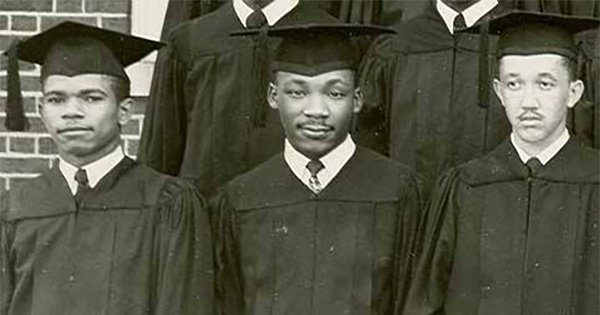
Photo: www.blackhistory.com 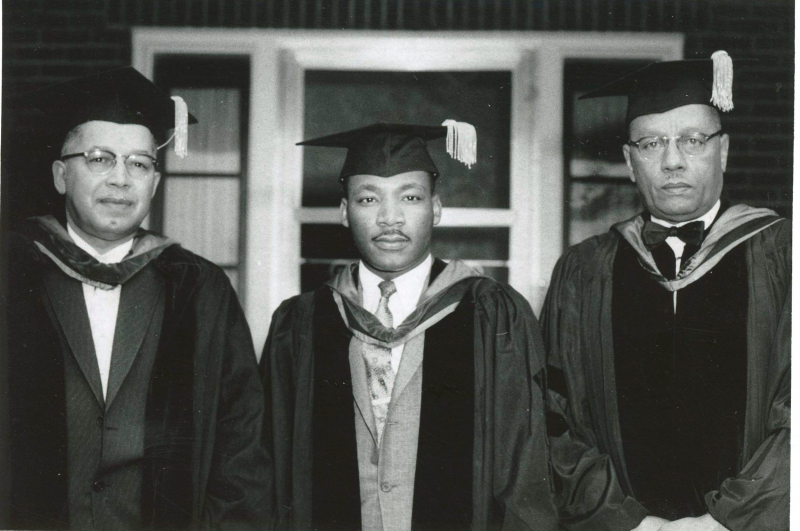
Photo: Pinterest -
King was chosen 1963's "Man of the Year" following the March on Washington for Jobs and Freedom in the January 1964 issue of Time Magazine. This is one of the interesting facts about Martin Luther King Jr. As the first African American to win this accolade, he made history. He had already been on the Time cover. He was featured on the cover of a magazine in 1957 for organizing the Montgomery bus boycott.
In honor of King, Time published a picture of the civil rights activist on the cover and a seven-page article with images from some of the most significant occasions in his life, such as a meeting with President Lyndon B. Johnson and King's imprisonment in Birmingham, Alabama, in 1963. King received several congratulatory telegrams, especially from Nelson A. Rockefeller, governor of New York, Roy Wilkins, secretary of the National Association for the Advancement of Colored People, and A. Philip Randolph, head of the Brotherhood of Sleeping Car Porters.
Although many of King's fans rejoiced over the tribute, King was secretly furious by some of the story's comments. He was stated to have "very little sense of humor" and to dress in a "funeral conservative" manner. King was criticized for his use of metaphors, which the author considered "downright embarrassing," having gained tremendous fame through his speeches and oratory abilities ("Man of the Year," 13).
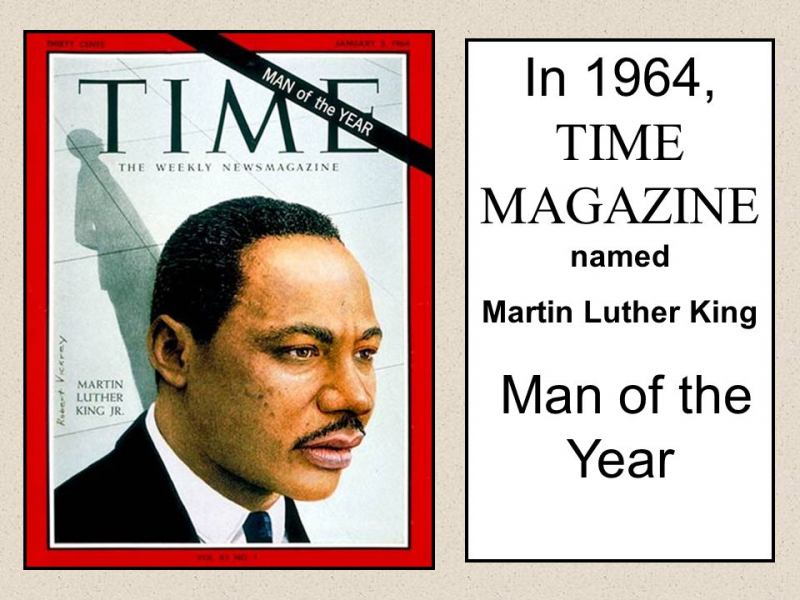
Photo: slideplayer.com 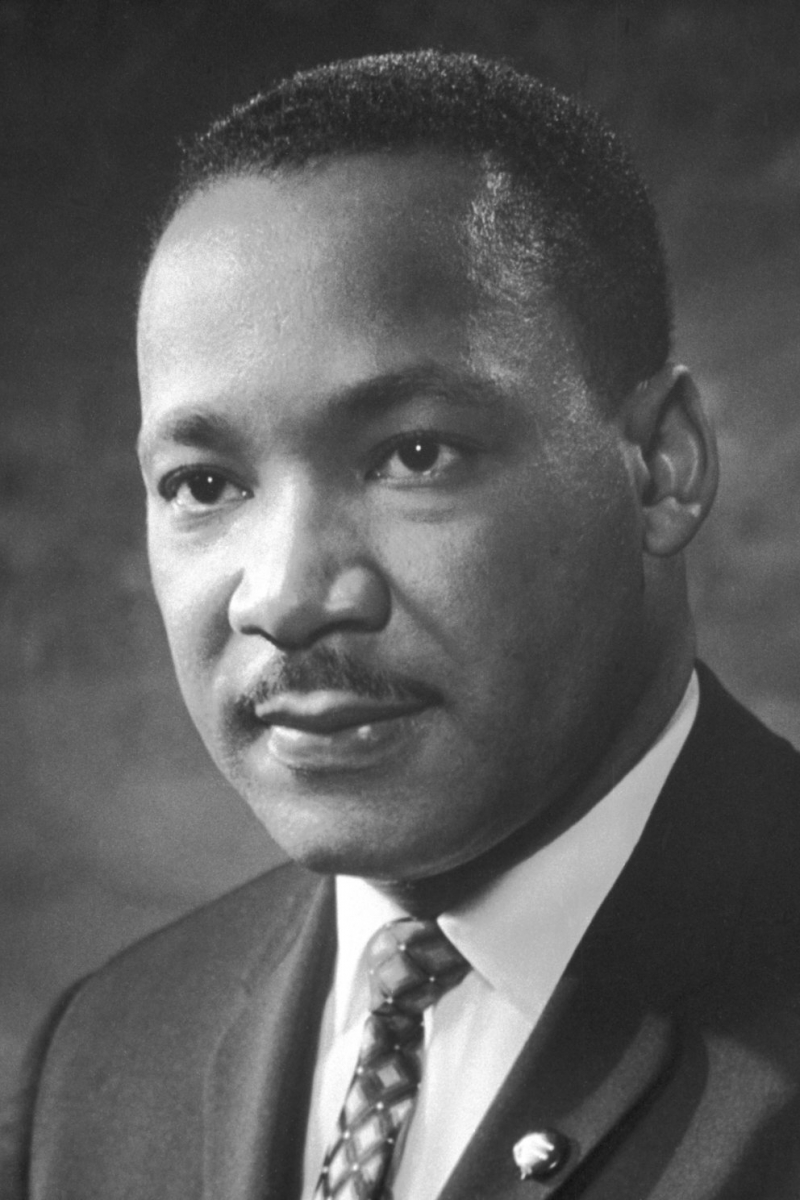
Photo: Wikipedia -
King received the Nobel Peace Prize on October 14, 1964, in recognition of his "nonviolent battle for civil rights for the Afro-American population." He was the youngest recipient of the coveted award at the time, at the age of 35 which is one of the interesting facts about Martin Luther King Jr.. In order to further the civil rights movement, he would donate the $54,123 prize money to the Southern Christian Leadership Conference.
At age 35, Martin Luther King Jr. was the youngest man to ever earn the Nobel Peace Prize for his nonviolent work to end racial inequality. His prize included a check for $54,123, which he gave to a number of groups, including the Southern Christian Leadership Conference (SCLC), the NAACP, the National Council of Negro Women, the Student Nonviolent Coordinating Committee (SNCC), and the Congress on Racial Equality (CORE), in order to advance the civil rights movement.
He assisted in the planning of two of the three Selma to Montgomery marches in 1965. In his later years, he broadened his agenda to include resistance to the Vietnam War, capitalism, and poverty. When King was killed on April 4 in Memphis, Tennessee, he was preparing a national occupation of Washington, D.C., to be known as the Poor People's Campaign. After his passing, there was widespread sadness throughout the country as well as the rage that sparked riots in numerous American cities. King received the Congressional Gold Medal in 2003 and the Presidential Medal of Freedom posthumously in 1977. Beginning in 1971, Martin Luther King Jr. Day became a recognized holiday in towns and states across the nation. In 1986, President Ronald Reagan signed legislation making Martin Luther King Jr. Day a recognized federal holiday. He has inspired the renaming of hundreds of American streets, as well as the rededication of Washington State's most populous county in his honor. 2011 saw the dedication of the Martin Luther King Jr. memorial on the National Mall in Washington, D.C.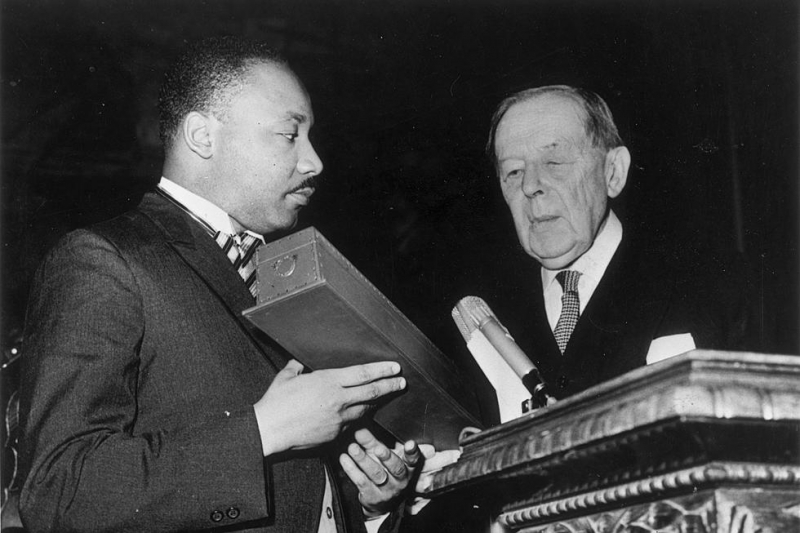
Photo: loudwire.com 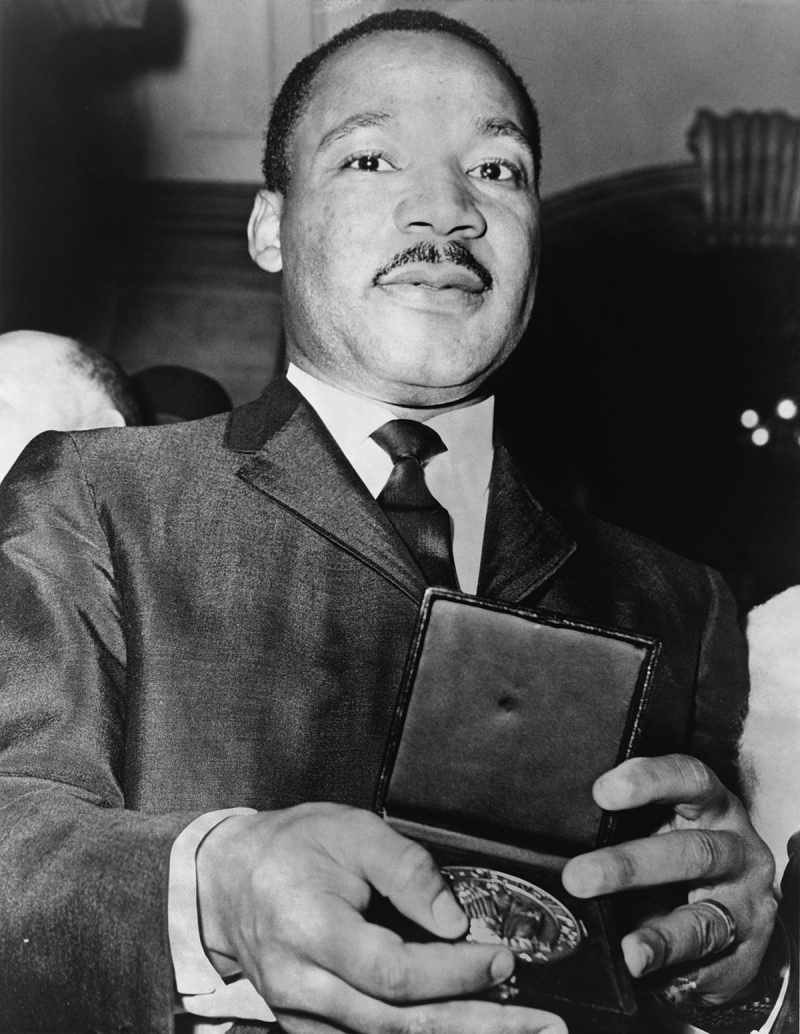
Photo: www.uml.edu -
Everyone is familiar with Martin Luther King Jr. and the heroic work he performed during the civil rights movement to advance the freedom and equality of African Americans. Despite the fact that King was highly regarded by many, police officials regarded him as a danger to national security. He was detained for "civil disobedience" offenses nearly 30 times, including once in 1956 when he was imprisoned in Montgomery, Alabama, for exceeding the speed limit by five miles per hour. Even the FBI had worries, and records indicate that the agency made ongoing attempts to obstruct King's progress. Following King's 1963 "I Have a Dream" speech, the FBI ramped up its inquiry into him and the SCLC.
Here are a few examples of when he was detained and the reasons for each. He was detained on January 26, 1956 in Montgomery, Alabama as part of a "Get Tough" campaign to scare those who were advocating a bus boycott. His residence was bombed on January 30, four days later. King, Rosa Parks, and more than 100 other people were detained on March 22, 1956, on suspicion of planning the Montgomery Bus Boycott in opposition to Parks' treatment. He was detained once more on July 27, 1962, for holding a prayer vigil in Albany, Georgia. He and Ralph Abernathy were detained on April 12, 1963, in Birmingham, Alabama, for holding an unlicensed demonstration. He penned what is now referred regarded as his famous "Letter from Birmingham Jail" when he was imprisoned. He was detained on June 11, 1964, in St. Augustine, Florida, for opposing the unification of public spaces. He was detained on February 2, 1965, in Selma, Alabama, during a protest for voting rights. However, the demonstrations persisted, and on February 3, sheriff's deputies and state highway patrol officers beat protesters at the Pettus Bridge.
Sadly, King was murdered in Memphis, Tennessee, on April 4, 1968, while there to support the city's sanitation workers, who demanded better pay and working conditions. However, his legend endures today.
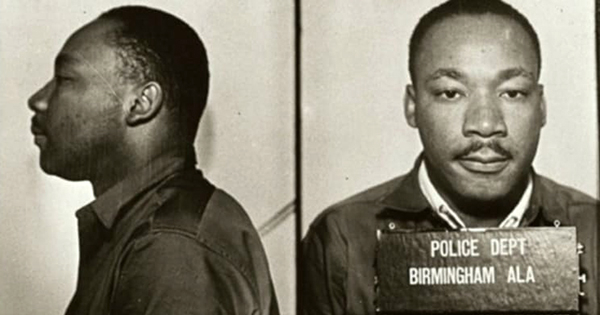
Photo: www.blackhistory.com 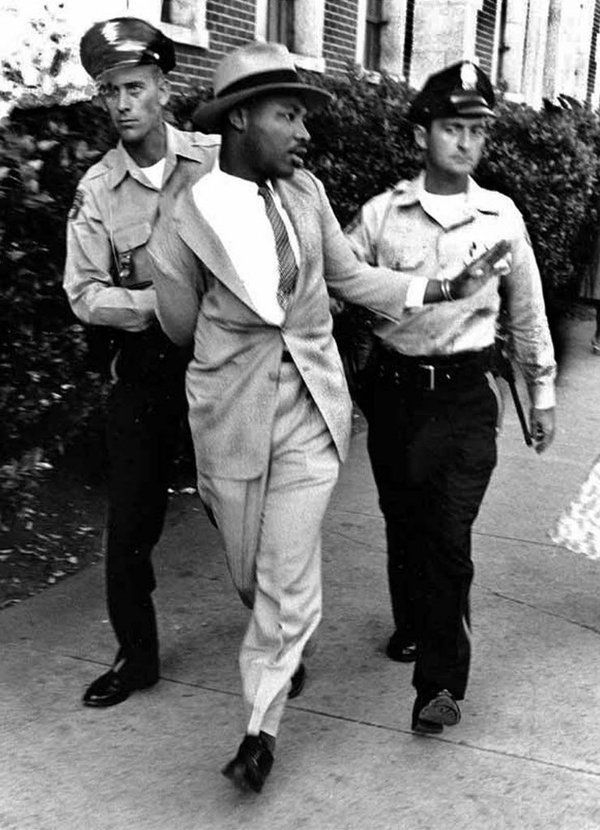
Photo: face2faceafrica.com -
On September 20, 1958, Martin Luther King Jr. was surrounded by a small group of people in a department store in Harlem's shoe department. They came to meet the 29-year-old pastor who was signing copies of Stride Toward Freedom, his memoir on the year-long Montgomery Bus Boycott, in a roped-off area of Blumstein's Department Store. A 42-year-old African American woman wearing sequined cat eye specs and a sharp suit sneaked past the 20 people in line and approached the civil rights activist as he was signing a book. She asked in a thick Southern drawl, "Are you Martin Luther King?" "Yes," King answered. Without warning, the woman leaned over the desk and slashed King's chest with a seven-inch penknife so forcefully that the handle cracked. Izola Ware Curry was restrained by bystanders until she could be taken into custody. He's been on my radar for six years. I'm happy I did it!" she exclaimed.
King remained alert and composed despite the commotion and yelling as a bloodstain covered his white cotton shirt. "That's OK, thanks. He assured his terrified followers who were debating whether to use the penknife that everything would be okay. Fortunately, nobody attempted it since it might have been fatal as King's aorta, the main artery supplying blood from the heart to the rest of his body, was only a fraction of an inch away from the steel point of the blade.
King had to undergo several hours of complicated emergency surgery when the blade tip came to rest next to his aorta. King was later informed by surgeons that a single sneeze may have killed him. King released a statement from his hospital bed, where he spent weeks recovering, defending his nonviolent convictions and claiming he had no ill intent toward his mentally ill assailant.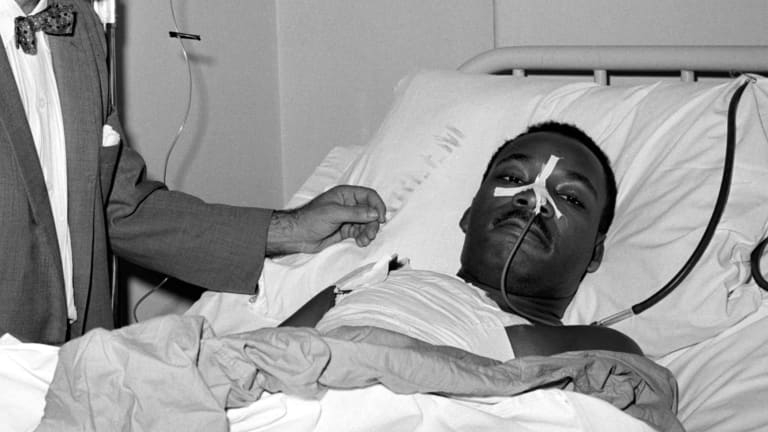
Photo: www.history.com Video: Associated Press -
Marcus Wayne Chenault Jr. got up from the front pew, pulled out two pistols, and started shooting on June 30, 1974, during a Sunday service inside Ebenezer Baptist Church, where 69-year-old Alberta Williams King was playing the organ. King was murdered by one of the gunshots, just a few feet from the spot where her son had advocated nonviolence. Despite having received heavenly instructions to kill King's father, who was a member of the church, the psychotic gunman claimed that Christians were his enemies and that he killed King's mother instead of her because she was closer. Additionally, a church deacon died in the shooting. Due in part to the King family's objection to the death penalty, Chenault's death sentence was eventually commuted to life in prison.
He decided to shoot Alberta instead because she was closer to the attacker and played the organ on Sundays at Ebenezer Baptist Church. The defendant was found guilty and given the death penalty; however, because King's family opposed the death penalty, the sentence was later commuted to life in prison.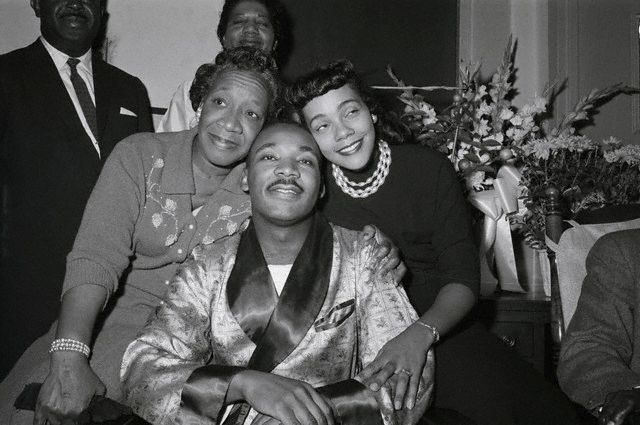
Photo: Pinterest 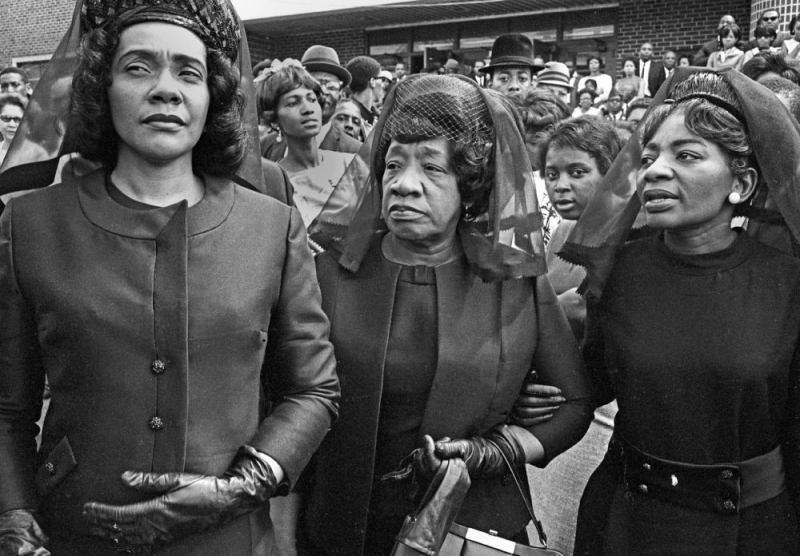
Photo: kinginstitute.stanford.edu








